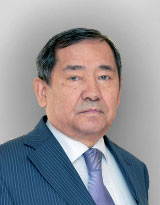ШЕТ ТІЛІ САБАҚТАРЫНДА САРАЛАП ОҚЫТУ ЕСЕБІНЕН ОҚУШЫЛАРДЫҢ ЫНТАСЫН АРТТЫРУ
https://doi.org/10.52512/2306-5079-2021-87-3-50-57
Аннотация
Мақалада сараланған оқытудың студенттерді шет тілі сабақтарында ынталандыруға әсерін анықтау мақсаты қойылған. Мотивация-оқу мақсаттарына жетуге әсер ететін шешуші фактор. Әлсіз және дарынды оқушылар терең білім алып, сабақ кезінде және сабаққа қатысу кезінде өздерін қанағаттандыратындай57 жағдай жасау қажет. Бұл жағдайда сараланған оқыту бар, өйткені бұл жеке қажеттіліктерді қанағаттандыруға және оқушылардың алуан түрлілігін тануға мүмкіндік беретін тиімді тәсілдердің бірі. Дифференциалды оқыту мұғалімнің дифференциацияның төрт негізгі элементін, атап айтқанда мазмұнын, процесін, өнімін және оқу ортасын ескере отырып, оқу процесін ұйымдастыру қабілетін қамтиды. Бұл зерттеуге Алматы қаласы Мемлекеттік мектебінің 25 оқушысынан құралған топ қатысты. Респонденттер ерікті негізде қатысты және зерттеуші құпия ақпараттың сақталуына кепілдік береді. Сауалнама сұрақтары зерттеушіге дифференциацияның мотивацияға әсері тұрғысынан зерттеу сұрағына дұрыс жауап табуға мүмкіндік береді. Деректер сандық әдіспен талданды; алынған нәтижелер сараланған оқыту элементтерінің оқушылардың мотивациясына қалай әсер ететінін анықтауға және білім беру процесінде мұғалімнің рөлінің маңыздылығын анықтауға мүмкіндік берді. Сараланған оқыту оқушылардың икемділігі мен еркіндігін қамтамасыз ете отырып, оқуды жеңілдетеді және тиімді етеді.
Автор туралы
Ә. Н. ИбрагимоваҚазақстан
«7M01701 – Шет тілі: екі шет тілі» мамандығының 2 курс магистранты
Қазақстан, Алматы қ., 050010, Абай даңғылы, 8А
Әдебиет тізімі
1. Tomlinson, C. (1999). The differentiated classroom: Responding to the needs of all learners. Alexandria, VA: Association for Supervision and Curriculum Development. P.54-5656
2. Yang, C., Chen, L. (2007). Can organizational knowledge capabilities affect knowledge sharing behavior? Journal of Information Science. 33(1), pp. 95-109. DOI:10.1177/0165551506068135
3. Jensen, E. (1998). Teaching with the brain in mind. Alexandria, VA: Association for Supervision and Curriculum Development. P.132-137
4. Spolsky, B. (2000), Anniversary article: Language motivation revisited. Applied Linguistics. 21(2), pp. 157-169. DOI:10.1093/applin/21.2.157
5. Ellis, R. (1994). A theory of instructed second language acquisition. In N. Ellis (Ed.), Implicit and explicit learning of languages. Academic Press. P.78-89
6. Ryan, R., Deci E. (2009). Promoting selfdetermined school engagement; motivation, learning and well-being. In Wentzel KR, Wigfield A. (Eds.). Handbook of motivation at school. New York: Routledge. P.171-196
7. Dörnyei, Z. (2005). The Psychology of the Language Learner: Individual Differences in Second Language Acquisition. Lawrence Erlbaum Associates Publishers. P.77-83
8. Makokha, A. Ongwae M. (1997) Trainer's handbook - A 14 days teaching methodology course. German Development Service, Kenya (Ded). P.132-136
9. Bowsher, A., Sparks, D., & Hoyer, K. M. (2018). Preparation and support for teachers in public schools: Reflections on the first year of teaching. Stats in Brief, NCES, 2018–143, P.1–36.
10. Glynn, S. M., & Koballa, T. R. (2006). Motivation to Learn in College Science. In J. J.Mintzes & W. H. Leonard (Eds.), Handbook of College Science Teaching. Arlington, VA: NSTA Press. P.25-32
11. Small, R. (2000). Motivation in instructional design. Journal of Teacher Librarian. 27. P.29-31
12. Glynn, S., Koballa, T. (2006) The contextual teaching and learning instructional approach. In Yager RE, (Ed.). Exemplary science: Best practices in professional development. Arlington, V. A.: NSTA Press; P.18-26
13. Convery, A., & Coyle, D. (1993). Differentiation: Taking the Initiative. (Pathfinder: CILT a series for language teachers; Vol. 18). CILT (Centre for Information on Language Teaching and Research). http://www.eric.ed.gov/PDFS/ED382025.pdf
14. Schleicher, A. (2016). Teaching Excellence through Professional Learning and Policy Reform. Corrigenda to OECD publications may be found on line at: www.oecd.org/publishing/corrigenda.
15. Tomlinson, B. (2003). Developing Principled Frameworks for Materials Development. In B. Tomlinson (Ed.), Developing Materials for Language Teaching. London UK, Continuum. (Quoted in Rico Troncoso, C. (2011). Principled Language Materials for the Development of Intercultural Communicative Competence. PhD Research Thesis, Leeds, UK: Leeds Met University.). P.107-127
16. Valiande, S., Koutselini, M. I. (2009). Application and evaluation of differentiation instruction in mixed ability classrooms. Paper presented at the 4th Hellenic Observatory PhD Symposium, London, LSE, P.25-26.
17. Mohd Said, Nur Ehsan M. (2019). The Effects of Differentiated Instruction on Students’ Language Attitude and Critical Thinking in an ESL Context. A thesis submitted in partial fulfilment of the requirements for the degree of Doctor of Philosophy. The University of Sheffield.
18. Pedersen, F., Kronborg, L. (2014). Challenging secondary teachers to examine beliefs and pedagogy when teaching highly able students in mixed-ability health education classes. Australian Journal of Gifted Education. P.15-27
19. Tomlinson, C. (2003). Fulfilling the promise of the differentiated classroom: Strategies and tools for responsive teaching. Alexandria, VA: Association for Supervision and Curriculum Development. P.99-103
20. Levy, H. (2008). Meeting the Needs of All Students through Differentiated Instruction: Helping Every Child Reach and Exceed Standards. The Clearing House: A Journal of Educational Strategies, Issues and Ideas, 81 (4): 161-164 DOI:10.3200/TCHS.81.4.161-164
21. Tomlinson, C. (2001). How to differentiate instruction in mixedability classrooms (2nd ed.). Alexandria, VA: Association for Supervision and Curriculum Development. P.55-67
22. Tomlinson, C., Callahan, C., & Lelli, K. (1997). Challenging expectations: Case studies of highpotential, culturally diverse young children. Gifted Child Quarterly, 41(2), P.5–17.
23. Melese, S., Tinoca, L. (2019). Instructors’ knowledge, attitude and practice of differentiated instruction: The case of college of education and behavioral sciences, Bahir Dar University, Amhara region, Ethiopia. Cogent Education, 6: 1642294. https://doi.org/10.1080/2331186X.2019.1642294.
Рецензия
Дәйектеу үшін:
Ибрагимова Ә.Н. ШЕТ ТІЛІ САБАҚТАРЫНДА САРАЛАП ОҚЫТУ ЕСЕБІНЕН ОҚУШЫЛАРДЫҢ ЫНТАСЫН АРТТЫРУ. Қазақ Ұлттық Қыздар Педагогикалық Университетінің Хабаршысы. 2021;(3):50-57. https://doi.org/10.52512/2306-5079-2021-87-3-50-57
For citation:
Ibragimova A.N. INCREASING STUDENT MOTIVATION THROUGH DIFFERENTIATED TEACHING IN FOREIGN LANGUAGE CLASSES. Bulletin of Kazakh National Women's Teacher Training University. 2021;(3):50-57. https://doi.org/10.52512/2306-5079-2021-87-3-50-57


















